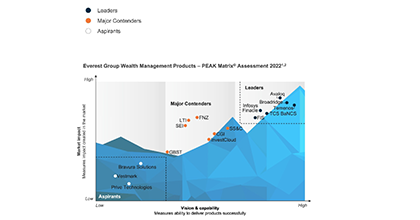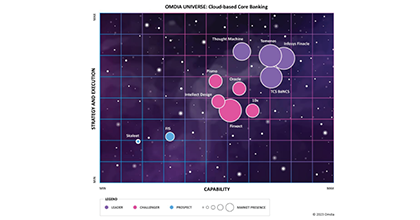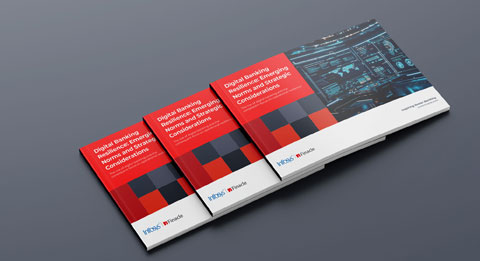Imagine a scenario where Keith (customer) and Jason (debt collector) are having a conversation:
Keith – Well yes, I know I have a balance past due, but I hope you understand this is not a good time. I am at the office right now.
Jason – Oh! I am sorry to catch you at the wrong moment; can I call back in the evening?
Keith – Well I moonlight as a Radio jokey. I can talk between either my day break 12-1 PM or 6:30 PM – 7:00 PM.
Jason – Very well, let me make a note of this……
While this looked like a perfectly executed collection call, there is a fundamental flaw in this scenario. The problem is that these notes may not be referred ever again and hence a crucial piece of information about the borrower’s communication preference would unfortunately be lost forever!
In today’s world where terabytes are no longer considered absurdly large and gigahertz is easily available on a laptop’s processors, for the lenders, not being able to use every bit of available information might mean losing out to the competition. Customer experience in debt collection is no longer just a good to have.
While the banking industry has seen a dramatic shift in the past decade or so – with online banking and app-based services that enable customers to make transactions anytime, anywhere and across devices, the debt collection process has somehow lagged behind in this customer-centric approach. Most outsourced agencies still have traditional call-center setups, which use rudimentary risk segmentation method without any regards to behavioural aspect of the customer. The lack of empathy in the collection agents’ tone coupled with untimely follow up calls may not only cause grave inconvenience to the customer but may also diminish chances of amicable collections altogether and any possibility of resurrecting customer’s loyalty towards the bank.
What banks need today is a customer centric approach to debt collection. And this is where Artificial Intelligence comes in by enabling debt collectors to effectively plan and execute a well-crafted customer segmentation strategy by utilizing data. The availability of huge volumes of historical transactions of customer data can be utilized effectively to analyze and predict patterns and create accurate risk segmentations by taking into consideration customer behaviors and outcomes.
Read our detailed whitepaper on Debt Collection made intelligent with Artificial Intelligence
In this blog I would like to propose a ‘3 RIGHTS’ strategy that uses AI to create customer friendly collection strategies.
Treat Your Customers With the Right Strategy
Your customers are not apples they are oranges! and a few bad oranges do not spoil the bunch!
In the debt collection process, a key thing is to understand that a delinquency has two dimensions. While financial ability to repay remains to be a primary dimension, ignoring willingness of the customer could lead to unpleasant experiences. A bad call with the collector could lead a highly willing customer with low financial risk, to stop co-operating with the bank or in the worst case, hold payment as a way to assert control and command attention.
For a most efficient collection effort it thus becomes imperative to accurately measure an account on the two dimensions before assigning the right strategy. For example, accurate identification of accounts that scores high both on ability and willingness could enable collectors to assign significantly less intrusive strategies like text messages or Interactive Voice Response or for that matter not take an action, without any detrimental impact on collections. This not only saves a customer an embarrassing phone call but given that the proportion of such accounts in general is high in a delinquent portfolio, collectors save on costly calls.
For the relatively small remainder of the delinquent portfolio, a follow-up call may be necessary and hence the next ‘2 Rights’ become relevant.
Know Your Customer’s Preference for Right Time and Channel
There is nothing more embarrassing to a customer than to get a collection call during an office meeting. Understanding the customer preference of right time to contact is a crucial starting point to getting a promise to pay.
Similarly, with increased access to smartphones and self-help apps, customers today prefer indirect communication modes like notifications and chatbots over a direct call when it comes to sensitive topics such as debt collection. These modes of communication can be effectively used at a time suitable for the clients (based on predictive analytics) to enhance their experience.
Machine learning and AI can also help customize experiences for customers based on previous history or usage patterns of other customers with similar profiles. In debt collection, this could be used to interact with customers on preferred devices and at times that are most suitable to engage with them effectively.
Talk to Your Customer With Right Tone
It is surprising to see that debt collection operations across the world are scantily using behavioral insights to drive their strategies for collection. Given that the collection process in many cases boils down to an artful negotiation between two individuals trying to solve a common problem by imposing the terms most beneficial to themselves.
For most customers a phone call is an intense event. From the moment a customer picks up a debt collectors call, they are continuously making decisions on whether they would want to cooperate with the collection agent or not. A few crucial behavioral insights recommended by the machine learning models, to start the conversation on a positive note will significantly enhance customer engagement. As an example, starting the discussion with a mention of the last night’s game for a baseball fan may instantly help put the customer at ease and facilitate an amicable discussion.
Once the call is past the initial hurdle It is primarily about matching a call script attuned to an intelligently identified behavioral profile of the customer. Such a script may be crafted with smartly personalized recommendations to provide essential hints to the collection agent to maximize the return for the lender. Some examples of these recommendations could be in terms of how long to persist until a ‘promise to pay’ is achieved or a minimum amount to accept as promised amount and so forth.
A more sophisticated AI based system will continuously evaluate the call in real time to assess customer engagement and dynamically highlight opportunities to lead the conversation towards a promise to pay.
Conclusion
A considerable shift is the need of the hour to look at debt collection from a customer-centric perspective to bring about a change that will not only improve collections but also ensure an improved customer experience. Many banks today, are shifting to technology to ensure a customer-first approach to debt collection, and Artificial Intelligence (AI) is leading the way in ensuring effective steps to make this process efficient and profitable while ensuring higher levels of customer’s satisfaction.
Existing processes can be improved to deliver better value with the application of AI by analyzing data and making recommendations based on usage patterns. Objection handling and language used by successful agents can be analyzed to provide insights and best practices to improve performance and productivity of other agents.
Businesses thrive when customers see value in their services. A great experience with a brand is what helps customers stick. The banking industry has been actively progressing with a customer-first approach and reaping the benefits that come along. It’s time debt collection adopts this approach too, to deliver an experience that is in the interest of customers while constantly improving collection in a structured manner.
EdgeVerve’s CollectEdge is a data driven intelligence application powered by advanced machine learning that helps reduce delinquency rates, boost recoveries and improve operational efficiencies, all-the-while delivering a great customer experience.




















